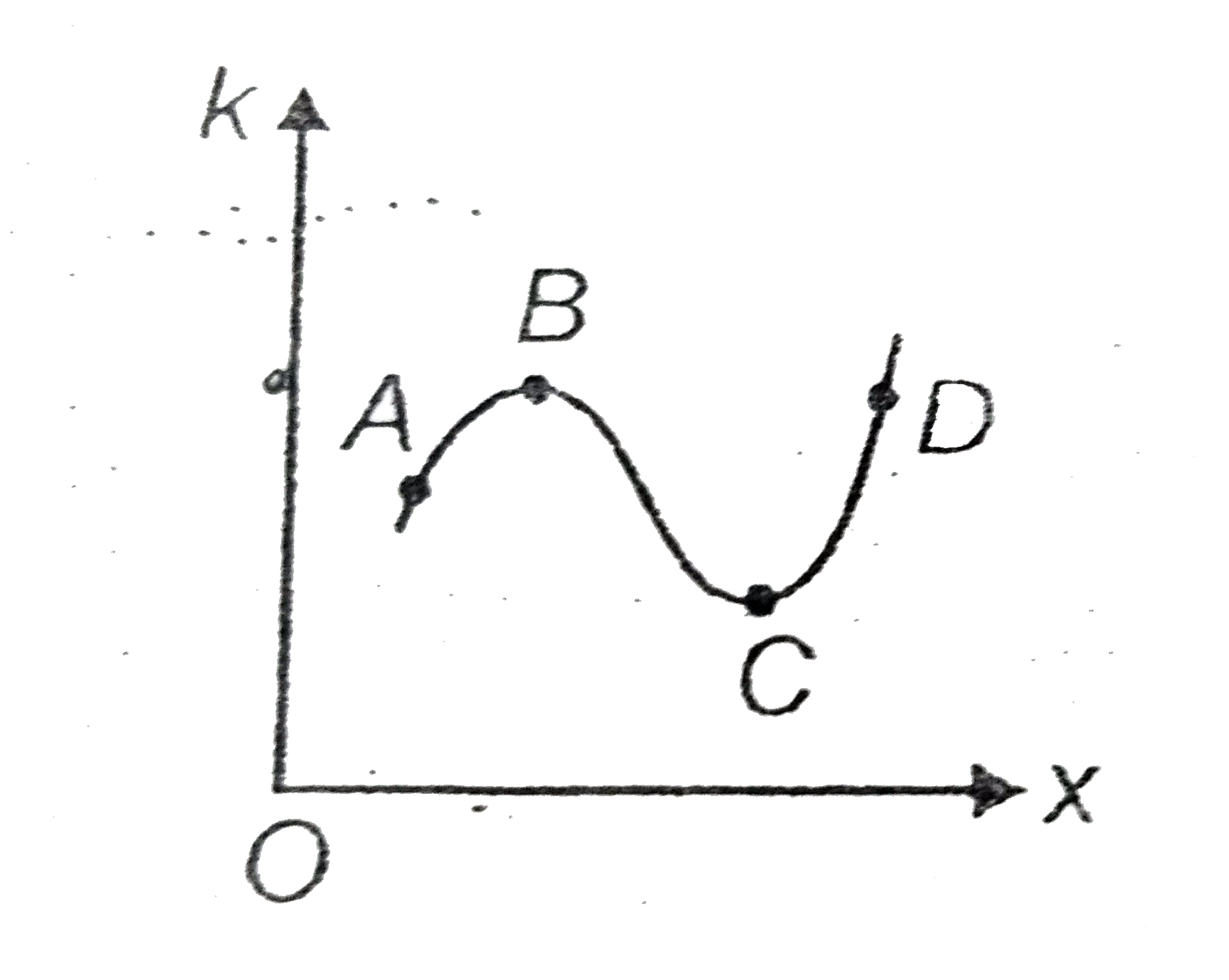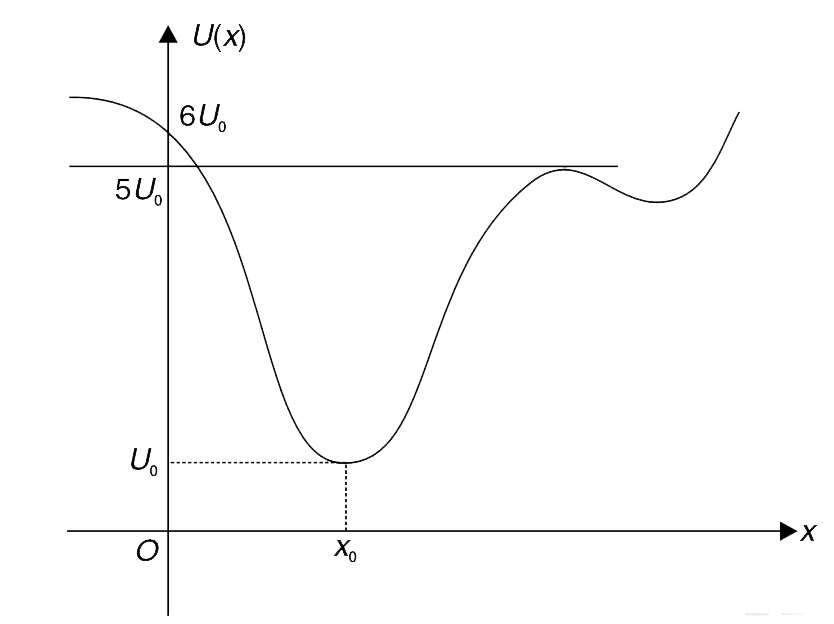For a particle moving under the action of a variable force, kinetic energy (k) varsus position (x) graph is given, then

At A particle is decelerating
At B particle is accelerating
At C particle has maximum velocity
At D particle has maximum acceleration
The correct Answer is:D
Step by step video, text & image solution for For a particle moving under the action of a variable force, kinetic energy (k) varsus position (x) graph is given, then by Physics experts to help you in doubts & scoring excellent marks in Class 12 exams.
Updated on:21/07/2023Topper's Solved these Questions
- WORK, ENERGY AND POWERBOOK - AAKASH INSTITUTECHAPTER - WORK, ENERGY AND POWEREXERCISE - Assignment (SECTION - B)
39 Videos
- WORK, ENERGY AND POWERBOOK - AAKASH INSTITUTECHAPTER - WORK, ENERGY AND POWEREXERCISE - Assignment (SECTION - C)
80 Videos
- WORK, ENERGY AND POWERBOOK - AAKASH INSTITUTECHAPTER - WORK, ENERGY AND POWEREXERCISE - EXERCISE
40 Videos
- WAVESBOOK - AAKASH INSTITUTECHAPTER - WAVESEXERCISE - ASSIGNMENT ( SECTION-D ( Assertion - Reason Type Questions ))
12 Videos
Similar Questions
A particle is constrained to move along x axis under the action of a conservative force. The potential energy of the particle varies with position x as shown in the figure. When the particle is at x = x0, it is given a kinetic energy (k) such that 0 lt k lt 4U0 (a) Does the particle ever reach the origin? (b) Qualitatively describe the motion of the particle

View SolutionA body of mass 4kg moving along a straight line under the action of a force.If kinetic energy varies with time as k=8t .The force acting on the body is ?
View Solution
Knowledge Check
Under the action of variable force, at any instant the displacement is
Aassumed to be infinitesimally small so that the force is assumed to be constant.Bconstant whatever be the magnitude of force.Chalf the magnitude of force.Dassumed to be infinitesimally small so that the force is assumed to be perpndicular to the displacement.A particle is moving along x-axis under the action of a force, F which varies with its position (x) as F∝x−1/4. The variation of power due to this force with x is
Ax1/3Bx1/8Cx1/2Dt1/4The position of a particle moving on a stringht line under rthe action of a force is given as x=50t−5t2 Here, x is in metre and t is in second. If mass of the particle is 2 kg, the work done by the force acting on the particle in first 5 s is.
A2500 JB−2500JC5000 JD−5000J
A particle is moving along x-axis under the action of a force F, which varies with its position (x)asf∝1√x.Find the variation of power due to this force with x.
View SolutionA particle of mass m moves under the action of a central force. The potential energy function is given by U(r)=mkr3 Where k is a positive constant and r is distance of the particle from the centre of attraction. (a) What should be the kinetic energy of the particle so that it moves in a circle of radius a0 about the centre of attraction? (b) What is the period of this circualr motion ?
View SolutionA particle of mass 9 kg is moving under the action of a central force whose potential energy is given by U=10/r For what energy it will orbit a circle of radius 10 m ? Calculate the time period of this motion
View SolutionA particle of mass 3 kg is moving under the action of a central force whose potential energy is given by U(r) = 10r3 joule. For what energy and angular momentum will the orbit be a circle of radius 10 m ?
View SolutionPotential energy of a particle moving along x-axis under the action of only conservative force is given as U=10+4cos(4πx). Here, U is in Joule and x in metres. Total mechanial energy of the particle is 16 J. Choose the correct option.
View Solution
